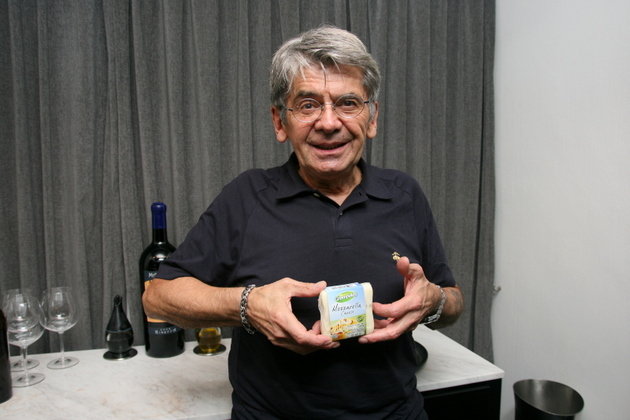
What Does It Take To Be A Master Cheesemaker?
By Catherine Ling - Monday, Jan 14, 2013
For nearly 50 years, Rolando Giovannacci honed his skills as a master Italian cheese maker. He has shared insight with cheese companies in Europe, Africa and the Americas on aspects of cheese-making, from artisanal to large process operations. Most recently, he helped PT Greenfields create mozzarella in Indonesia – it’s the first dairy in Southeast Asia to achieve that.

And yet he says it’s not the years of experience that makes a good dairyman, but the willingness to learn, patience, creativity, the ability to gauge the milk and, in particular, the imagination to create a cheese.
“In Italian jargon, it is called ‘a hard apprenticeship’, but we can term it as ‘willingness to learn’ and ‘sacrifice’. The cheese is like a living organism and must be ‘pampered’. We must be able to recognize when it needs moisture or heat, for example,” says Rolando. “The milk will not talk. You have to understand it.”
In his career he learned to work with all types of milk and several types of cheeses: lactic curd (Philadelphia), yogurt, uncooked cheese (Camembert), semi-cooked (Fontal), cooked cheeses (Parmigiano) and melted cheese, for example.
Each type of cheese has its own production and aging process, temperature and humidity requirements; every one is unique and individual.
“They cannot be considered ‘dairymen’ those who know only one type of milk or can do only one type of cheese. You must be able to produce any kind of product with all types of milk (cow, sheep, goat, buffalo…),” he adds.
Rolando had followed his father’s footsteps, but cheese was truly his destiny and passion. He was struck by the charm of creativity in producing any type of cheese: the result of a thousand different facets, flavours so soft and, maybe, at the same time, spicy. The smell emanating from a fresh cheese or an aged, well-seasoned block would enrapture him.
50 years ago, he muses, it was a very different industry. Everything was manual. There were no fridges. They worked every day and didn’t store milk. Rolando has seen the industry change but it’s kept him even more keenly interested in the development and making of cheeses.
Cheesemakers in Italy often train at different dairies to enhance their own experience. There are some schools but they are expensive and there is no accreditation. You learn and develop your own skills and judgement. Rolando rattles off with ease and detail cheese-making specifications like a living production manual. But there’s more to it than just knowing facts and numbers.
“Training can only teach you so much. You have to work with milk which continuously varies in its characteristics – for example, the seasonal differences affecting the milk’s fat content, or different flavours due to the origin of the pastures. Add to that all the other variables that we encounter. Do you think that mere technical training can guarantee success? It takes poetry…but a good product is worth striving for – it is the best reward!” says Rolando.
Of all the cheeses he’s worked with, Provolone is one of the hardest to make. True Provolone (not the machine made variety) is a cheese entirely handmade in a small scale, in forms from 120kg onwards. Parmigiano cheese is more expensive to manufacture because of its low yield (500 liters of milk to make 35kg) and for the curing time (minimum 18 months of seasoning). Fresh cheeses are the least expensive because these have higher yields and are sold immediately after production.
The cheeses that he personally prefers for their scents and flavours are, in fact, Provolone and Parmigiano (cow’s milk), Roquefort, Danish blue (from sheep’s milk). Rolando says cheese was born for red wine, and thus likes a glass to accompany his meditation. The man indeed knows and loves his cheeses, as a master cheesemaker should.


